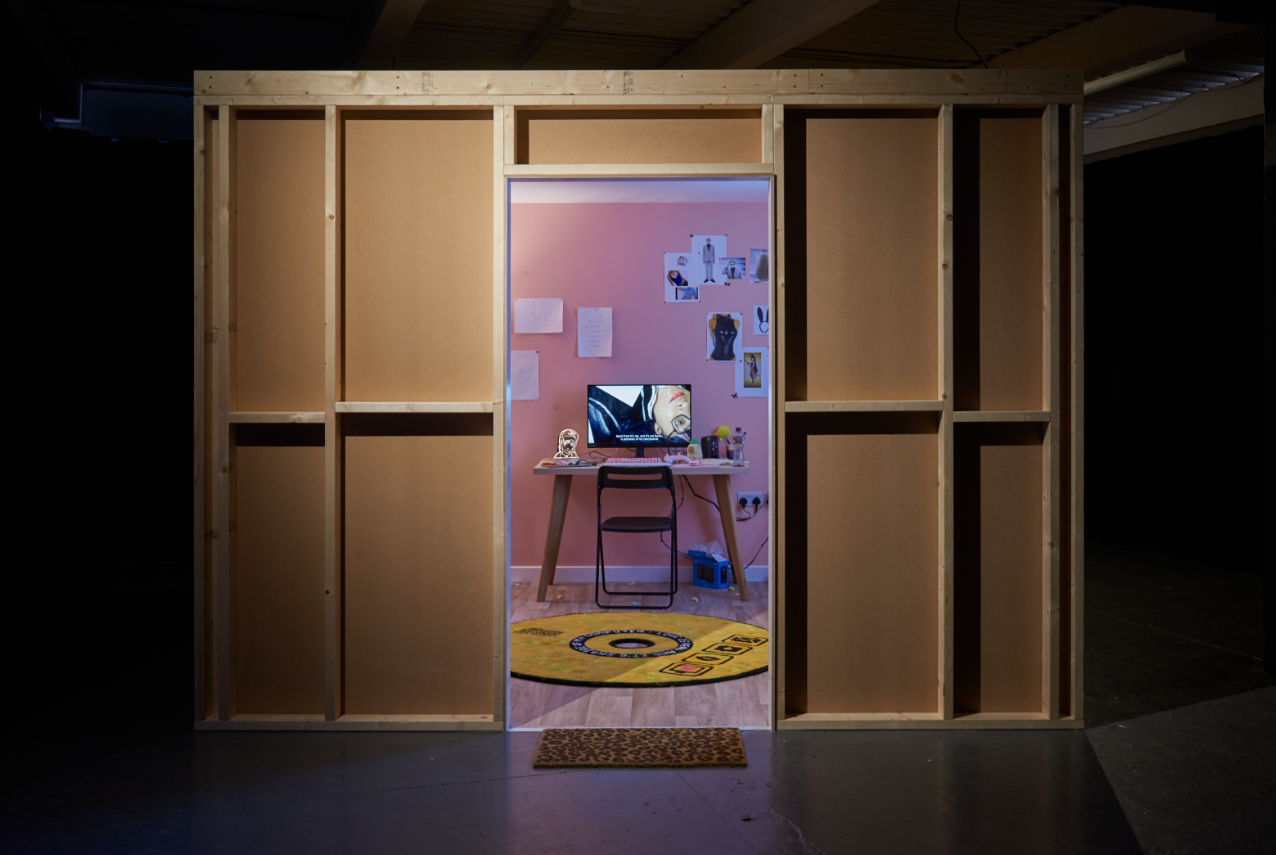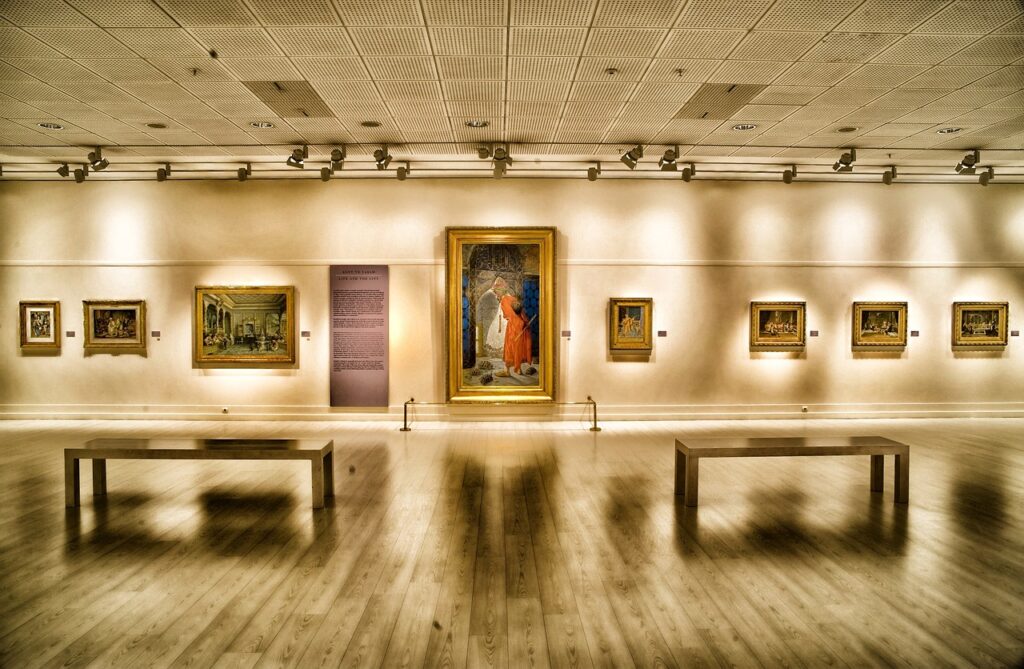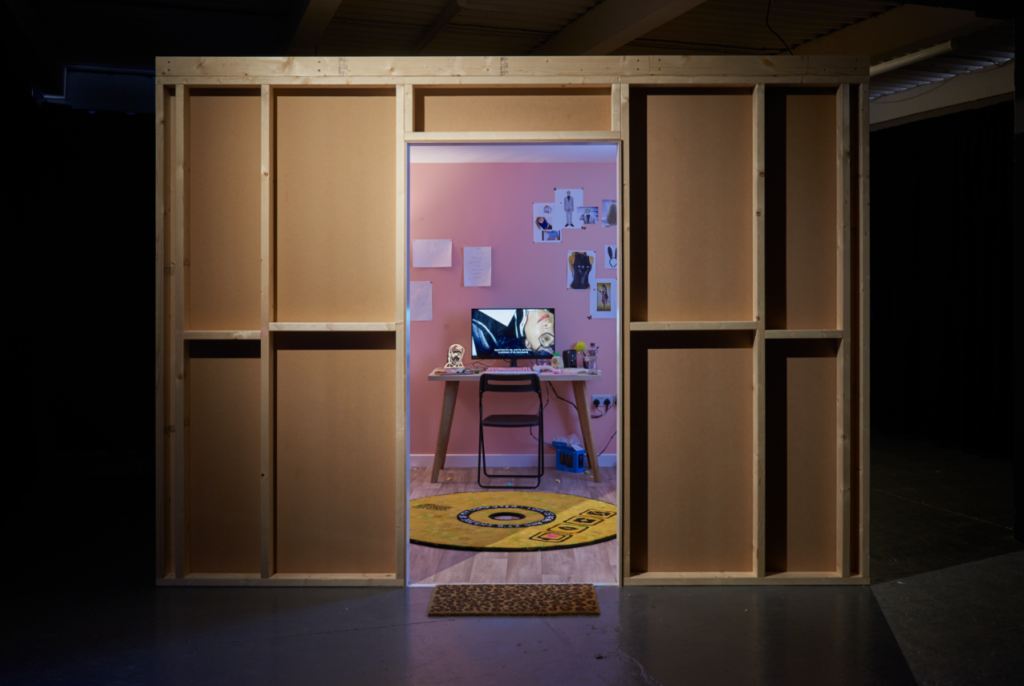
Behind a thick black curtain at Birmingham’s Grand Union is an immersive new exhibition ‘Love is Real, and it’s Inside Of My Computer’, created by Babeworld in collaboration with sound artist utopian_realism. It features a fun but tender film which poses questions about creativity for young artists today, without traditional artspeak getting in the way; defined by its accessibility, it reflects Digbeth’s contemporary art scene. But what future do artists have in this rapidly developing part of the city?
Digbeth, we are told, is undergoing a creative industrial revolution. Building has begun on Stephen Knight’s multimillion-pound TV and film studio, the BBC are taking over the old Typhoo Tea Factory, and The Bond – home to Late Night Lycett – has branded itself Birmingham’s “freshest creative hub”. Even Soho House, infamous for its selective membership criteria, is reported to be in talks about an outpost in the area.
The media boys have arrived and are being hailed as saviours of Digbeth’s “wasteland”, as it was described in one recent feature. But doesn’t this narrative ignore the artists, galleries and studios already in situ? Why exactly have the likes of Knight been attracted to this district? Noone wants to set up shop in an actual wasteland, after all.
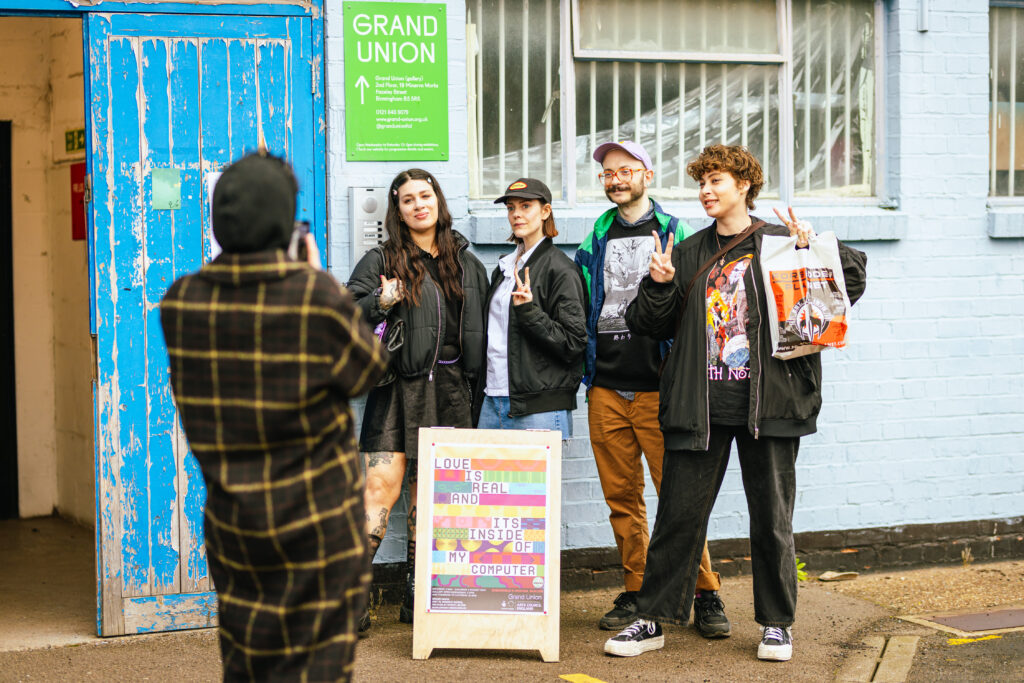
Answers can be found at artist-led gallery Grand Union, an Arts Council funded NPO, located on Fazeley Street. A small, driven team has been working hard and from the ground up for 14 years to support artistic making and collective action. As Director Cheryl Jones says, “There is a strong creative ecology here in Digbeth that is thriving and popular.”
Among its activity, Grand Union forms meaningful partnerships which serve diverse communities, including vulnerably housed people. Partnering with the likes of Spring Housing Association, they deliver workshops for participants, enacting their belief that artistic expression is vital to well-being.
Committed to championing and collaborating with artists, 22 practitioners benefit from affordable, subsidised studio space at Grand Union, while the gallery acts as an extension of the studios, through which the team “build relationships with, rather than dictate to, artists”.
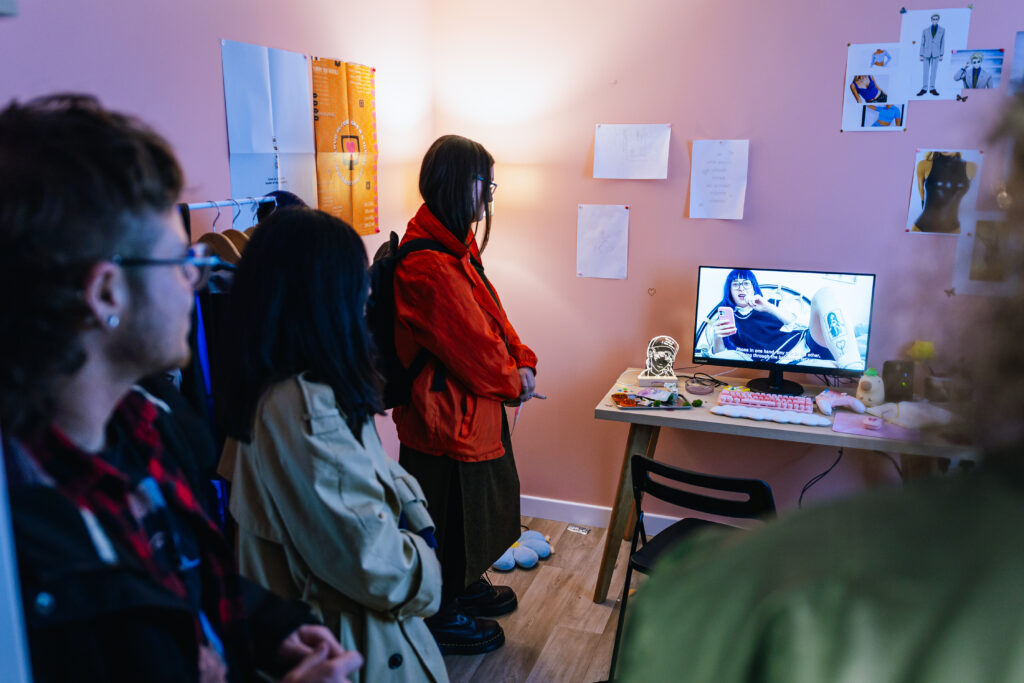
Working with artists Co-Programme Director Hannah Wallis has curated Babeworld’s biggest show to date, which is based on their lived experience as an intersectionally disabled collective. ‘Love is Real, and it’s Inside Of My Computer’ points to the alienation of marginalised folk in the mainstream art world, while poking fun at gatekeeping.
Babeworld also highlight the impact of gallery expectations on artists’ mental health, exposing the constant need to have innovative ideas. Set to an ambient soundtrack, viewers find their way through darkness to a lived-in pink room where they can sit on a sofa and watch a film. A character speaks: “I need ideas”, they muse while huddled in the duvet of an unmade bed, procrastinating.
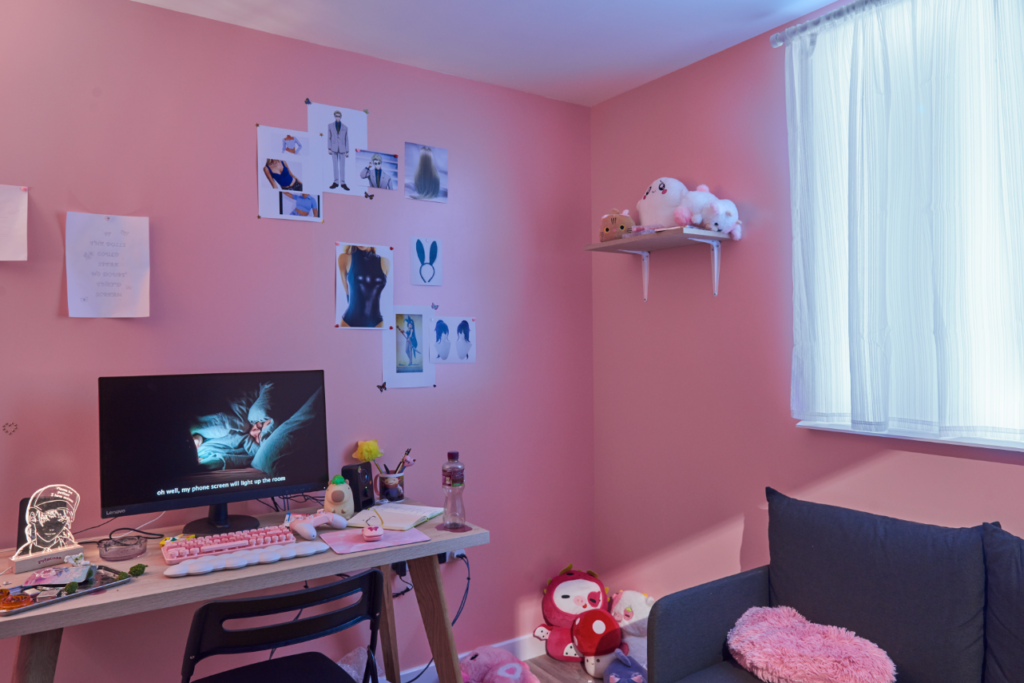
This is a vision of creativity in 2024, as we compete with endless online content. On screen, the character is doomscrolling their way out of expression and into anxiety. It sounds depressing, but with pop-culture, anime and pastel infusions, it’s more comic than bleak.
This is Digbeth at its best, raising real issues that artists face in original ways. It’s also the reason why the likes of Lycett – who brands himself a comedian and painter performing beyond the mainstream – identify with this district.
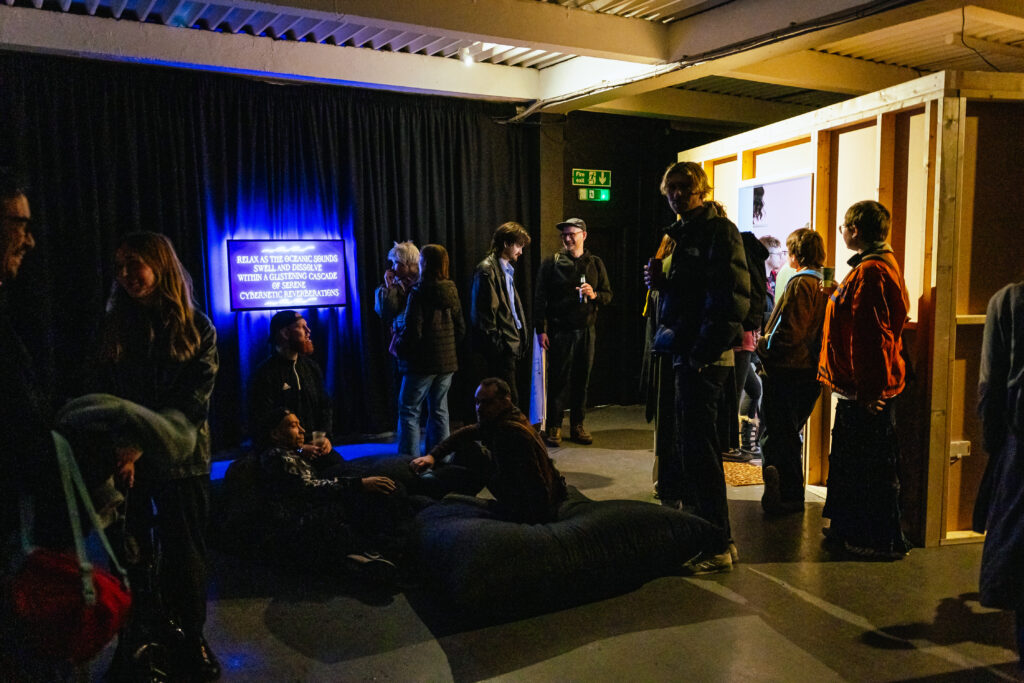
But there is a danger that, as the media move in, artists will have to move out. The risk is real, as Jones explains: “Rents rose by 60% for Grand Union last year, creating a challenge for the organisation’s current resources.” Grand Union is determined to continue to offer affordable studios for artists. Meanwhile, Knight wants to expand his space; such plans for Minerva Works, where Grand Union is based, are unclear, but could make it difficult for Digbeth’s cultural organisations to sustain themselves.
Jones points out, “If people move from London to Birmingham for jobs with the likes of the BBC, they will want a city with a thriving cultural scene”. She’s right and there is a thriving cultural scene already here. Nowhere is this more evident than in Digbeth First Friday (DFF), which has just turned 10!
On the first Friday of each month, from 6pm until late, the area comes alive with exhibitions, performances, live music and street food. Hugely popular, crowds flock in and Grand Union reports that up to 250 people can come through their doors as part of the event each month.
First started by Friction Arts, Eastside Projects and Grand Union as an ‘Art After Hours Event’ a decade ago, DFF was intended as a sociable event that would create a buzz around the area, tackling the image of Birmingham as an artistic desert.
Succeeding in its aim, DFF has evolved to include many galleries and spaces such as Stryx, Centrala, Prayer Room and Vivid Projects. Yet, remaining artist-led, its maintained the same ethos and invitation for people to “try something new”.
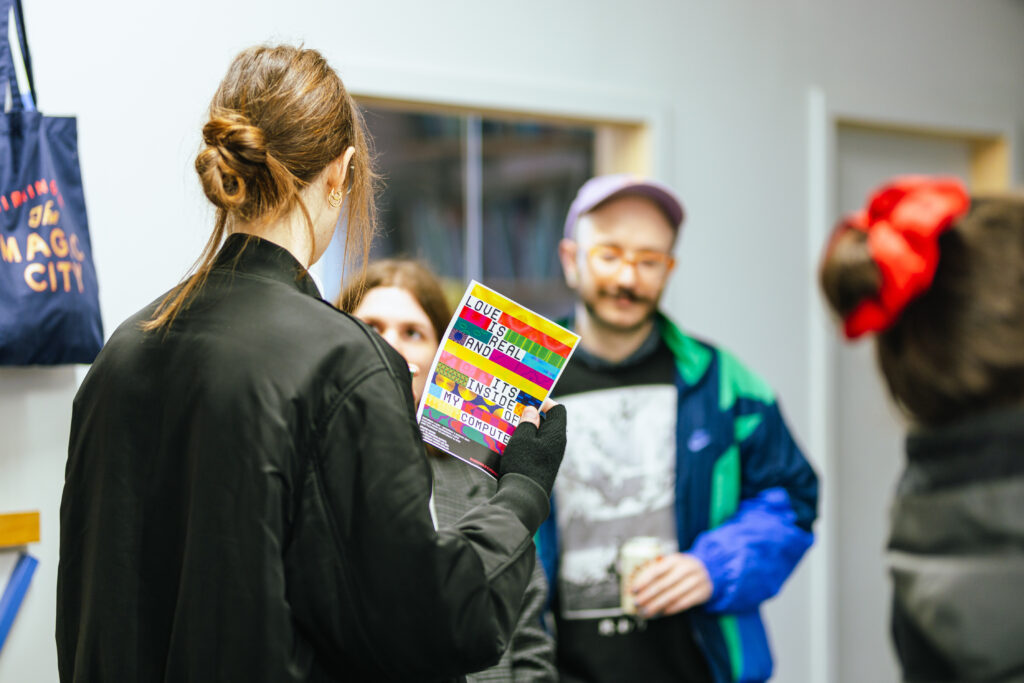
What, then, does the next decade have in store for Digbeth? Like DFF, it should evolve through investment. But there needs to be a consideration, from those moving in, for the culture already cultivated by the artists rooted here. “Digbeth First Friday needs resources to grow, and collaboration with new people coming here could be positive”, says Jones, who imagines it could be transformed into a larger event.
Like many other leaders in this entrepreneurial corner of the city, Jones hopes that the galleries aren’t sidelined by media studios. Launching their exhibition as DFF turns 10, Babeworld draws back a curtain on Digbeth to reveal an independent district that is defined by its creatives, welcoming all visitors. As the area is regenerated by, and to suit, the media sector, they must work with and not against the artists who have drawn them here in the first place. As Jones says, “There is room for all of us here.”
‘Love is Real, and it’s Inside Of My Computer’ is free to visit at Grand Union and runs until 3 August 2024, including First Fridays taking place in June, July and August. There are accessible ways to enjoy it on the gallery’s website where events, including a Masked Ball, are listed: www.grand-union.org.uk/
